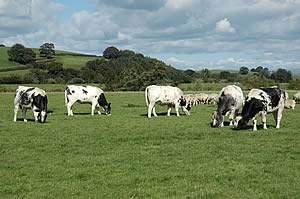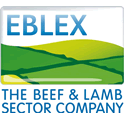 |
|||||||||
|
|||||||||||||||||||
|
|
National Market Analyses Highlight Foot
& Mouth Impact Foot and mouth restrictions in August and September have resulted in a significant backlog of up to 400,000 head of lambs and 19,000 prime cattle across Great Britain, according to the latest analyses from the English Beef and Lamb Executive (EBLEX) which expects this backlog to have grown still further through October.
With over-hangs of this size to be cleared in late 2007 and early 2008, producers can expect a continuing knock-on effect of FMD on both market prices and volatility in the coming weeks. All the more so since the average carcase weight of lambs sold deadweight this autumn has been a good 4% higher than the same period last year. Overall, clean sheep slaughterings in England and Wales were 30% lower than 2006 in August and 15% down in September, with liveweight sales hit particularly badly. While live trade volumes have since recovered sharply, sale levels over the first three weeks of October have still been 60% below last year. What is more, sales of the heaviest lambs (over 45.5 kg liveweight) have increased markedly, putting further pressure on the market. Not surprisingly perhaps given the acute disruptions to live markets, the EBLEX analyses show liveweight prices have been affected to a noticeably greater extent than deadweight values. At 80p/kg, the average SQQ price for finished lambs in the first three weeks of October was 28% down on the trade before FMD. In contrast, carcases averaged 207p/kg over the same period - or only 20% down on the level recorded before FMD. Even so this remains a very disappointing 11% below the long-term average for the time of the year. Even greater falls have been recorded in the lighter weight lamb categories as a result of export restrictions which cut UK exports by 5200 tonnes or 67% in August alone and resulted in some 200,000-250,000 more sheep being directed to the domestic market. The relative seasonality of marketings means the cattle trade has been proportionately less affected by FMD than the sheep sector, with prime cattle slaughterings down 7% on 2006 in both August and September. Cow disposals have, however, seen a far greater impact, with year-on-year slaughterings down 37% in August and nearly 14% in September - a total of almost 17,000 cows less than 2006 over the two months. Prime cattle prices in England and Wales remained notably stable throughout the outbreak, actually increasing from around 200 p/kg deadweight just before FMD to 205 p/kg by the end of September. Although this could easily change for the worse as the backlog of stock comes onto the market in the coming few weeks, the effect of increased marketings may well be offset by the normal seasonal rise in beef prices. In contrast, cow prices have been on a seesaw - plunging from an average of 140 p/kg deadweight just prior to the first case of FMD to 118 p/kg in mid-August and bouncing back to nearly 140 p/kg with the lifting of initial restrictions only to fall back to 114p/kg with the second wave of sanctions.
|
||||||||||||||||||

|
|
||||||||||||||||||
| home | agri-services | pedigree
pen | news | dairy | beef | machinery property | organisations | site map |
|||||||||||||||||||

